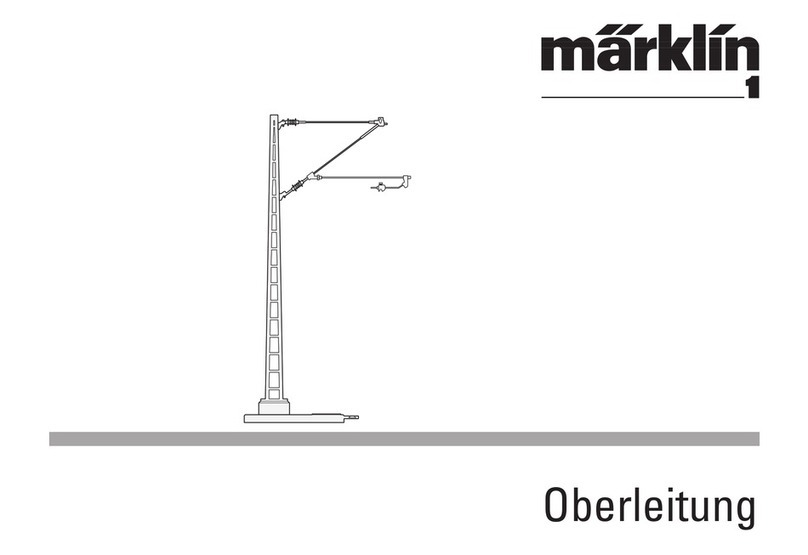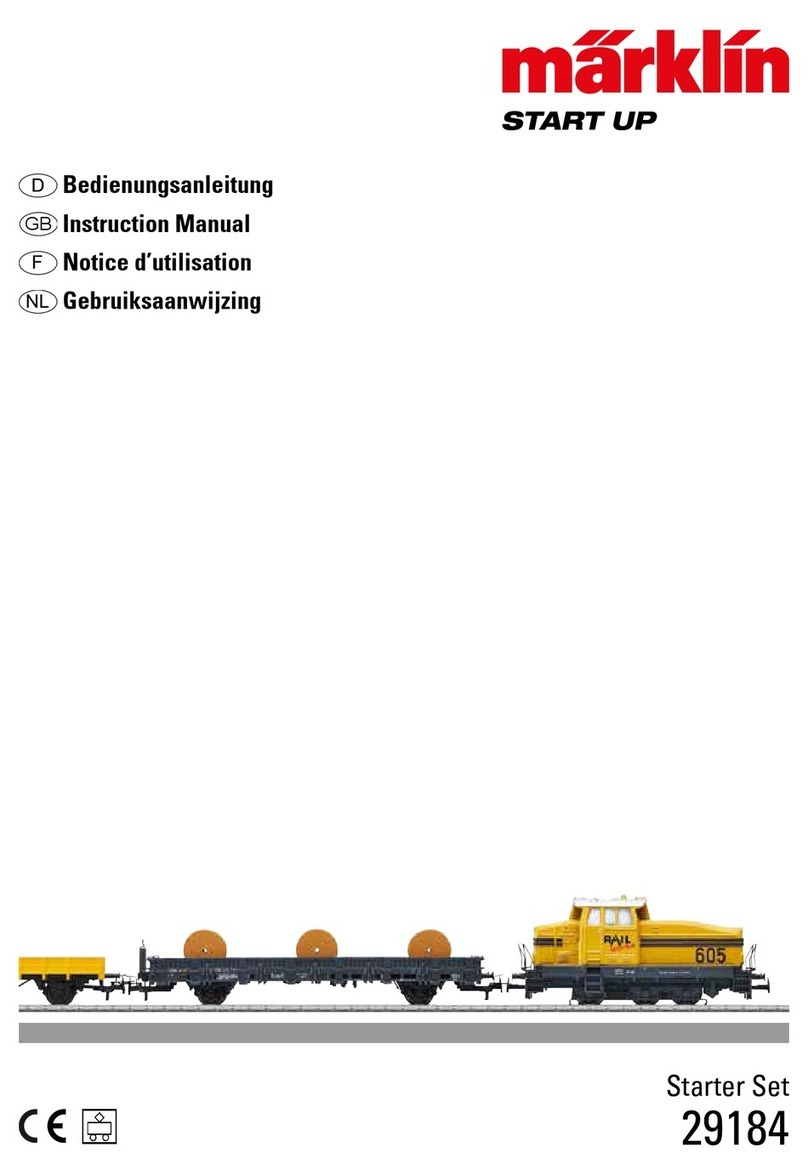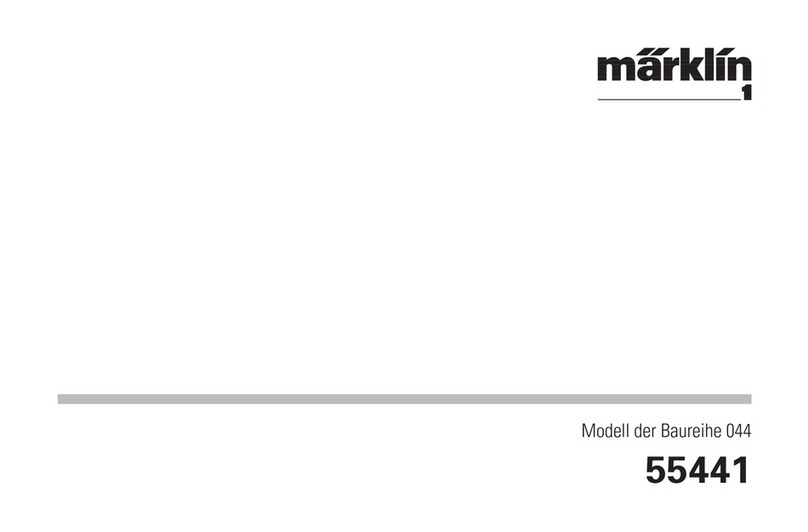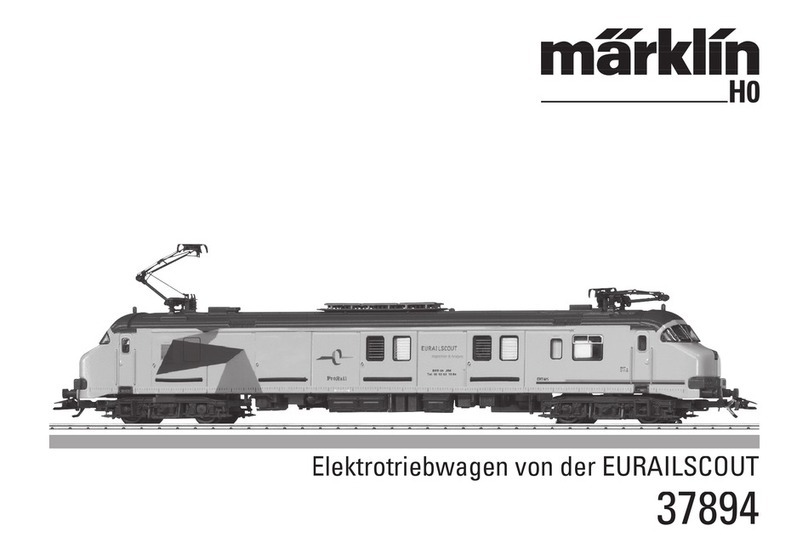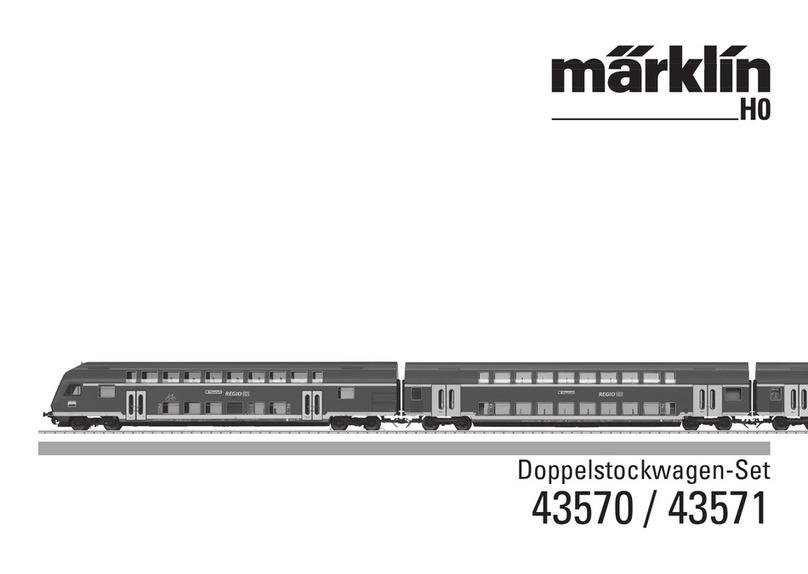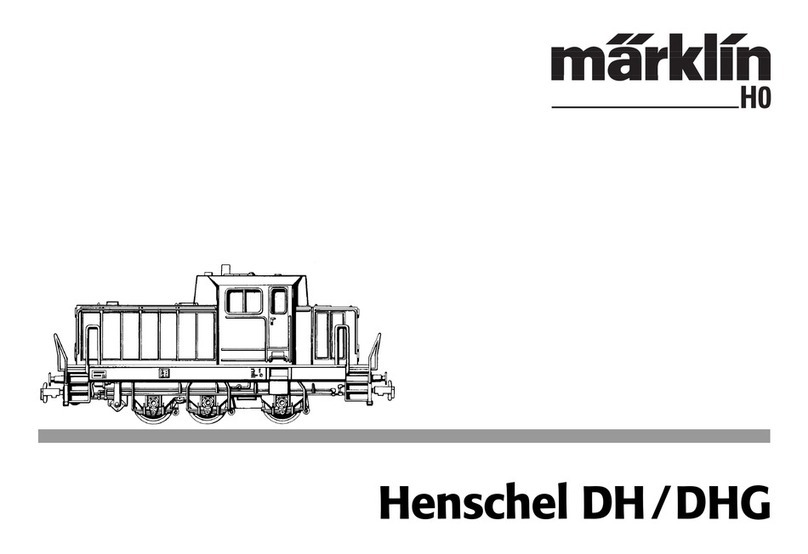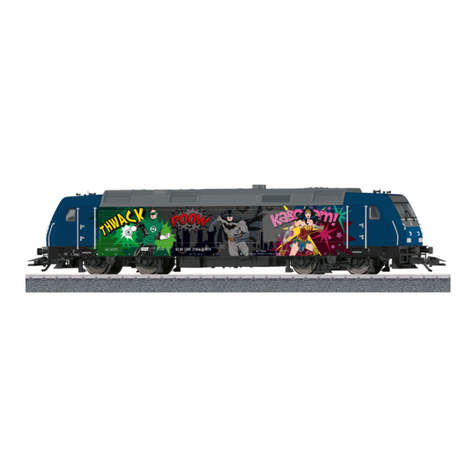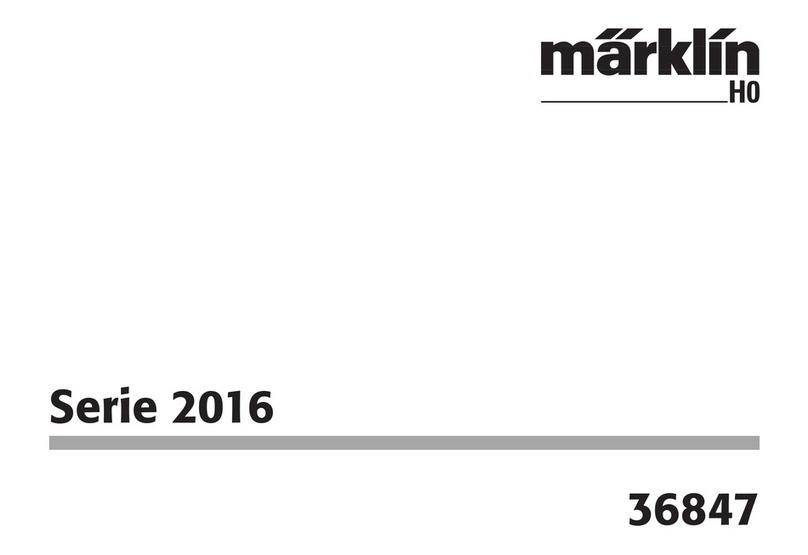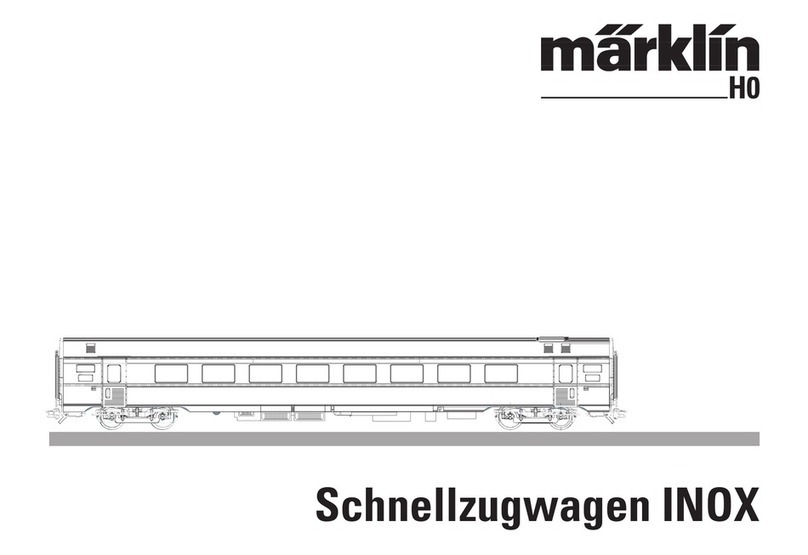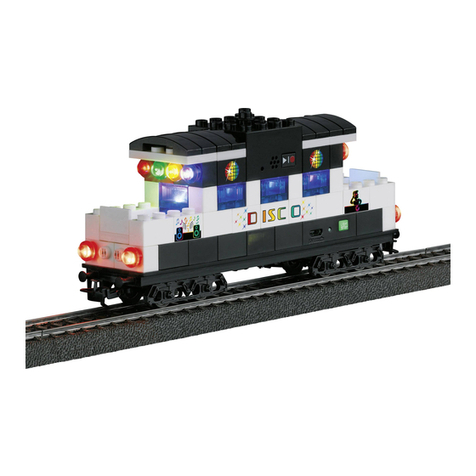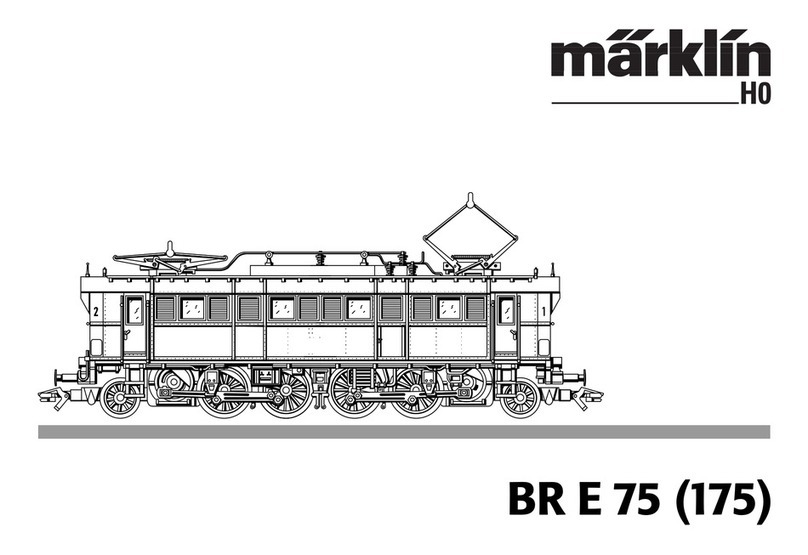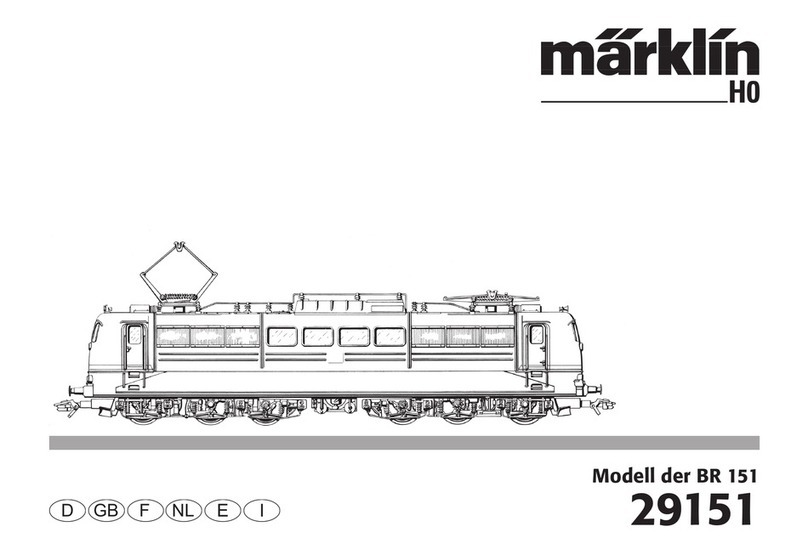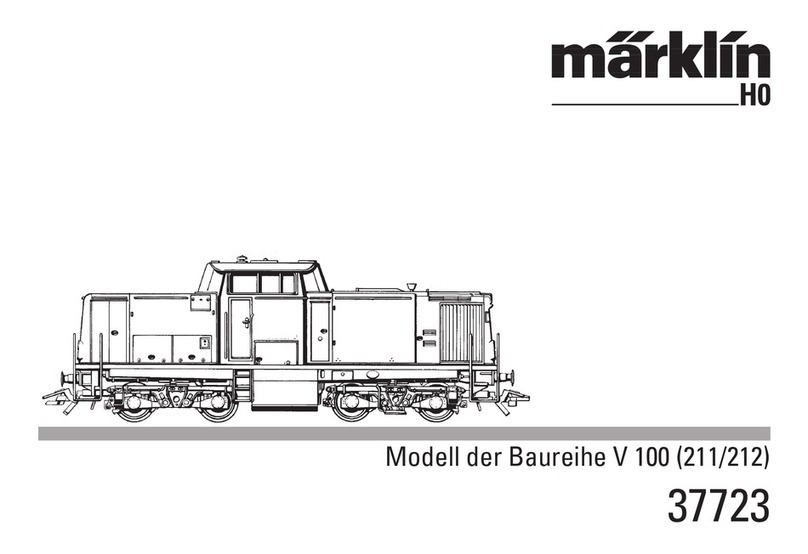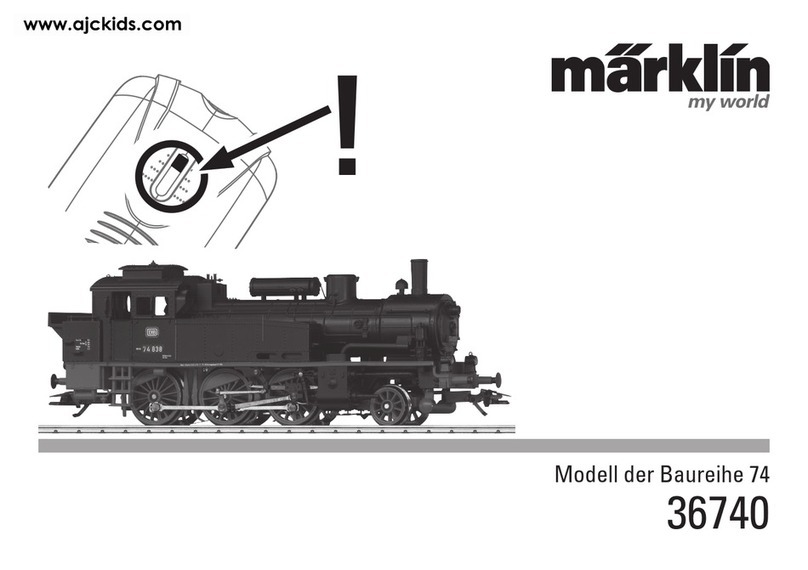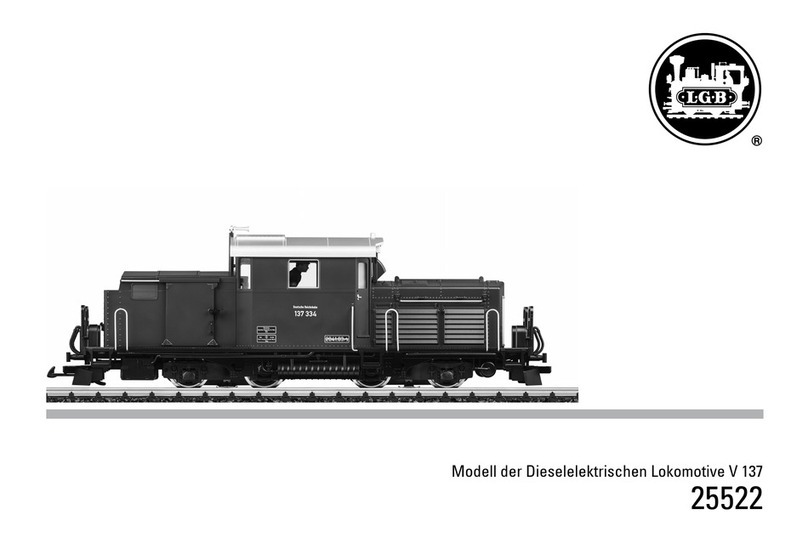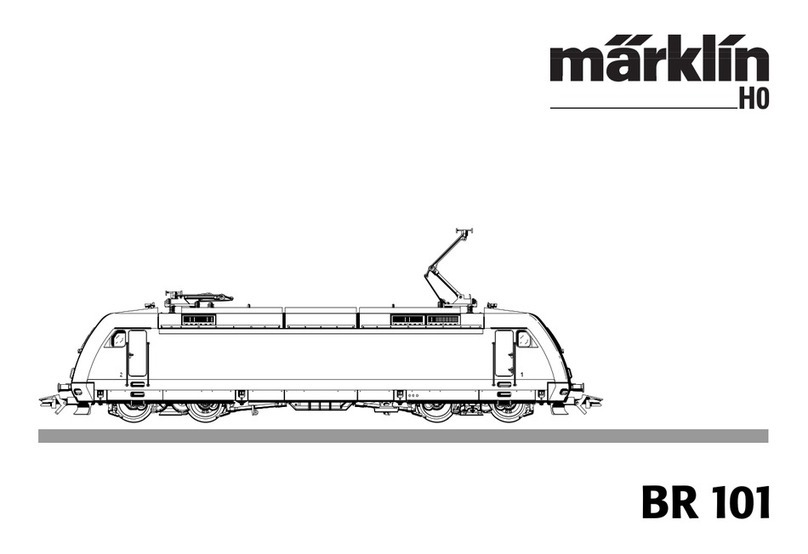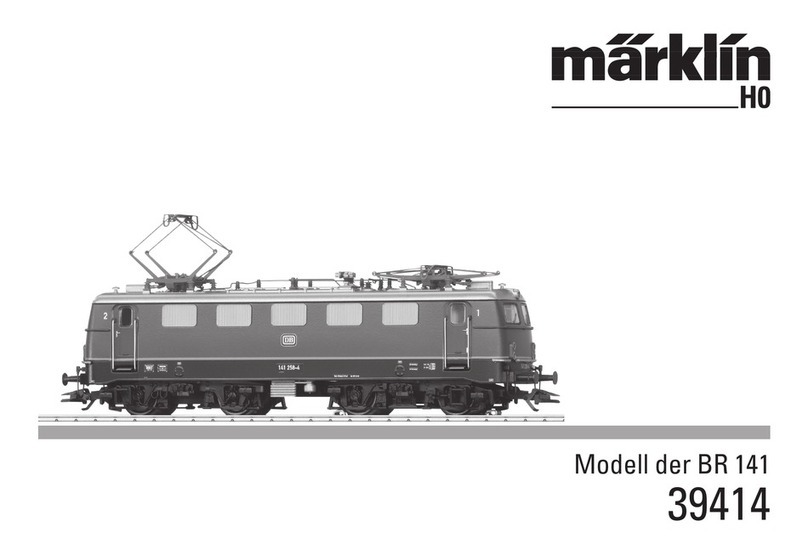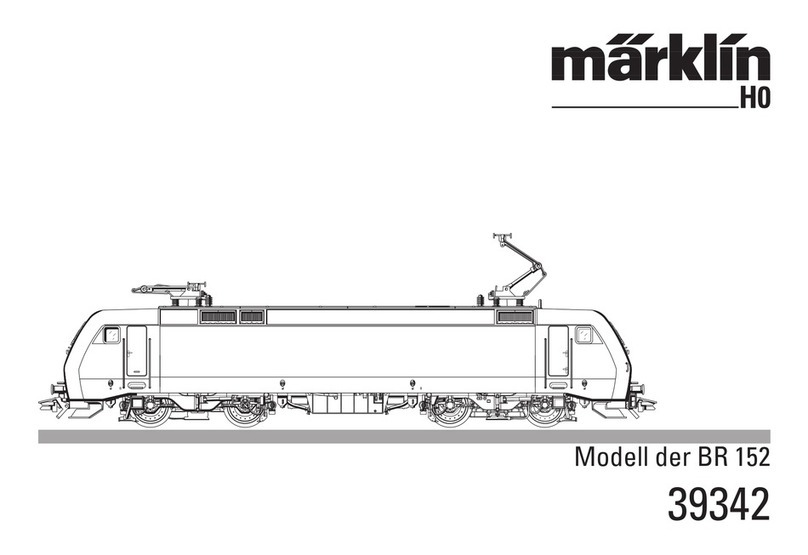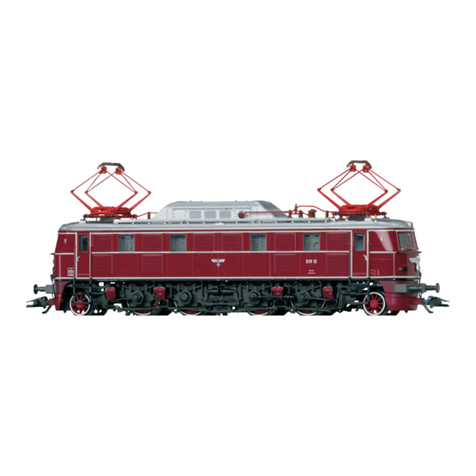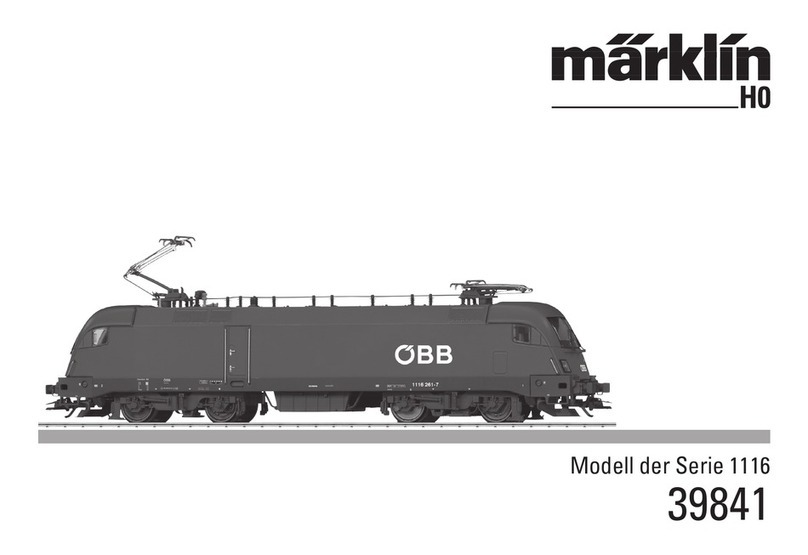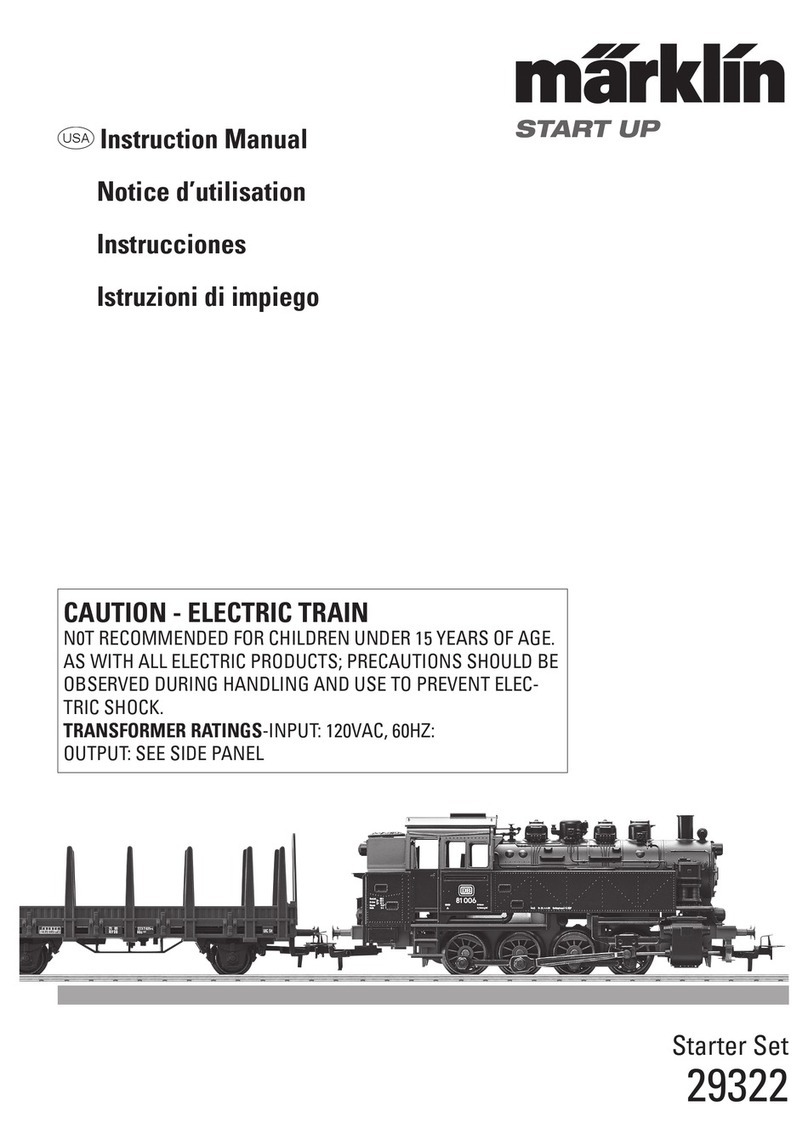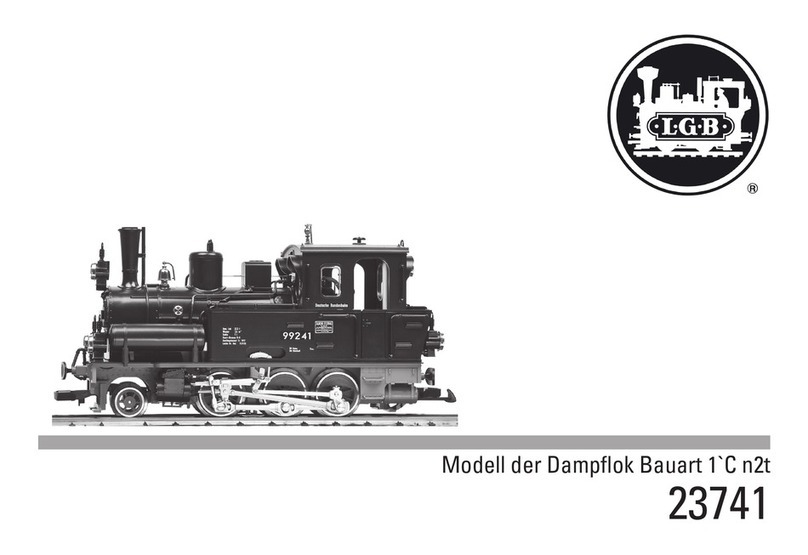10
Funktion
Diese Lokomotive mit eingebauter Mehrzug-Elektronik bietet:
• Wahlweise Betrieb mit Gleichstrom (max ± 18 V=),
Wechselstrom (Märklin Transformer 32 VA), Märklin Delta
(nur Delta Station 6607), Märklin Digital (nur Control Unit)
oder Märklin Systems (Mobile Station, Central Station).
Ein Betrieb mit anderen Betriebssystemen (Impulsbreiten-
steuerung, Central Control 1 etc.) ist nicht möglich.
• Die Betriebsart wird automatisch erkannt.
• 80 Mehrzugadressen einstellbar. Adresse ab Werk: 37
• Mfx-Technologie für Mobile Station / Central Station.
Name ab Werk: SVT 137
• Veränderbare Anfahrverzögerung (ABV).
• Veränderbare Bremsverzögerung (ABV).
• Veränderbare Höchstgeschwindigkeit.
• Veränderbare Lautstärke der Geräusche
• Einstellen der Lokparameter elektronisch über
Control Unit, Mobile Station oder Central Station.
• Eingebaute Geräuschelektronik, nur im Betrieb mit
Control Unit oder Märklin Systems nutzbar.
Zusätzliche schaltbare Geräusche.
• Das Modell ist für den Betrieb auf Märklin 1-Gleisen
entwickelt. Ein Betrieb auf anderen Gleissystemen
geschieht auf eigenes Risiko.
• Befahrbarer Mindestradius: 1020 mm
•
Bis auf die Stirnbeleuchtung sind die Funktionen in den
Betriebsarten Gleichstrom, Wechselstrom und Märklin
Delta ausgeschaltet.
Die bei normalem Betrieb anfallenden Wartungsarbeiten
sind
nachfolgend beschrieben. Für Reparaturen oder Ersatzteile
wenden Sie sich bitte an Ihren Märklin-Fachhändler.
Jegliche Garantie-, Gewährleistungs- und Schadensersatzansprüche sind ausge-
schlossen, wenn in Märklin-Produkten nicht von Märklin freigegebene Fremdteile
eingebaut werden und / oder Märklin-Produkte umgebaut werden und die ein-
gebauten Fremdteile bzw. der Umbau für sodann aufgetretene Mängel und/ oder
Schäden ursächlich war. Die Darlegungs- und Beweislast dafür, dass der Einbau
von Fremdteilen oder der Umbau in bzw. von Märklin-Produkten für aufgetretene
Mängel und / oder Schäden nicht ursächlich war, trägt die für den Ein- und / oder
Umbau verantwortliche Person und / oder Firma bzw. der Kunde.
Sicherheitshinweise
• Die Lok darf nur mit einem dafür bestimmten Betriebs-
system (Gleichstrom, Märklin Wechselstrom-Transfor-
mator 6647, Märklin Delta, Märklin Digital oder Märklin
Systems) eingesetzt werden. Keinesfalls Transformatoren
für eine Eingangsspannung von 220 V - für USA 110 V
- verwenden.
• Die Lok darf nur aus einer Leistungsquelle gleichzeitig
versorgt werden.
• Für den konventionellen Betrieb der Lok muss das
Anschlussgleis entstört werden. Dazu ist das Entstörset
104770 zu verwenden. Für Digitalbetrieb ist das Entstör-
set nicht geeignet.
• Beachten Sie unbedingt die Sicherheitshinweise in der
Gebrauchsanleitung zu Ihrem Betriebssystem.
